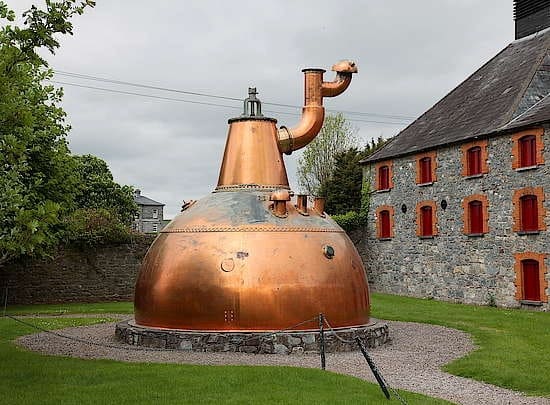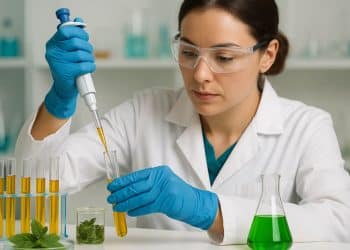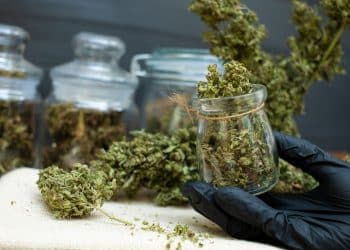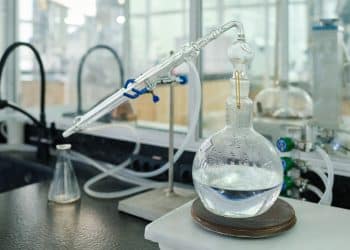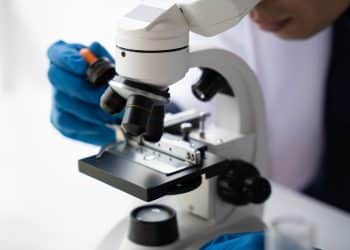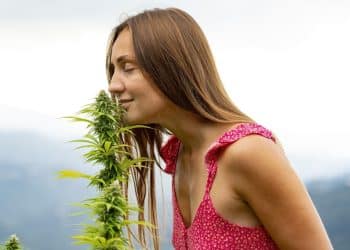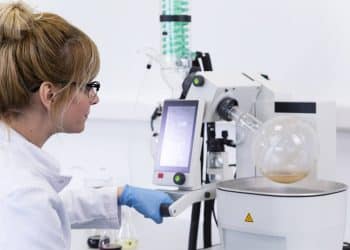A Focus on Celtic and Kentuckian Distillation
In a previous installment, we journeyed well back into history to canvas how some ancient cultures utilized distillation, often for making perfumes or fermented beverages. It’s worth noting the amount of science stemming from making beer, wine, and booze. And while there were likely lots of mishaps, blowups, and overall sketchiness from the vantage point of modern-day compliance and safety lectures, early moonshiners contributed to the history of distillation, and thus, this blog is dedicated to them.
A book authored by Scottish writer Robert Chambers in 1864 called The Book of Days, reported an Irish legend that Saint Patrick “taught the art of distillation as applied to the production of potheen and that the liquor is named after the saint.” [1] Potheen refers to an Irish moonshine made from potatoes. While the validity of this is disputed, what’s interesting is that the Celtic word for the distilled spirit is “uisque-beatha” or “water of life”. [2] The English transformed this word to “usquebaugh” and by truncating the last syllable, the word whisky was formed.
Whiskey is obviously also a very American beverage, and Kentucky’s up next on our tour. Distilling tradition is integral to Kentucky’s story and culture, whether regarding bourbon or moonshine. I spoke to Jim Higdon, the Co-Founder of Cornbread Hemp, about the trinity of hemp, corn, and distillation deep within the heart and history of Kentucky.
“The first documented Kentucky hemp crop was planted in central Kentucky in 1775, which is the same timeframe as the first distilleries,” Jim explained. “For 250 years, these two industries have existed in Kentucky. The fourteen years of alcohol prohibition (1919-1933) didn’t stop Kentucky distillers from practicing their craft, and neither did the 80+ years of hemp prohibition (1937-2018, minus the years of WW2).”
Analogous to the cannabis industry, prohibition caused the underground Kentucky hemp cultivation and corn distillation industries to become tradition amongst outlaws, making them stronger. Jim says that it’s only been “within the last two years that these traditions converged into a single product, as Kentuckians in the hemp industry began using bourbon methodologies in the extraction process.”
Just like in the Germanic brewing tradition, there are standards that need to be followed when crafting traditional Kentucky bourbon. The liquor must be at least 51% corn and aged for at least two years in new, charred, white oak barrels. Jim said that “Kentucky bourbon has always been made with more than 50% corn and some combination of wheat, rye, and barley making up the rest.”
Now that Kentucky hemp cultivation thrives once more, traditional distillation customs can transfer to hemp oil. “Bourbon distillation and hemp distillation are similar processes but yield different results,” Jim replied. “People are quick to assume that distillation gives an alcohol content, but that only happens if you add yeast to ferment.” That misconception will fade as more people become conscious of cannabis and hemp products and how they’re made.
“One bourbon distilling concept that translates to hemp extraction is only taking the heart of the run,” Jim explained. “In bourbon making, the distiller doesn’t take the head of the run (too strong) or the tail end of the run (too much water). This concept, when applied to the hemp distillation process, yields a purer product from a cannabidiol perspective. In the Cornbread Hemp distillation process, we only take the heart of the distillate run which yields cleaner end products.”
Jim says that although people developing extraction methods understood how to extract cannabidiol from hemp, they didn’t know which processes worked best. “In Kentucky,” he proudly stated, “we have applied 200 years of bourbon making traditions to the process to get superior results. If we can distill something, we distill!”
References
- Chambers, R. 1802-1871. The Book of Days: A Miscellany of Popular Antiquities in Connection with the Calendar, Including Anecdote, Biography, & History, Curiosities of Literature and Oddities of Human Life and Character. Edinburgh: W. & R. Chambers, 186364.
- Fairley, T. “The Early History of Distillation.” Journal of the Institute of Brewing, vol.13, no.1907, pp. 559-582.
Image Credits: Whisky.com
